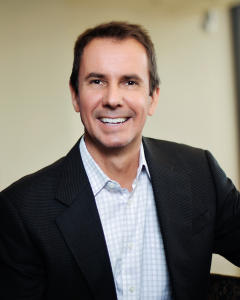How Amenities Expectations are Changing Development
August 17, 2015 – GlobeSt.com, by Carrie Rossenfeld
 Bill Wilhelm was recently interviewed by Globe St. on his views on how amenities are playing a role in construction and development.
Bill Wilhelm was recently interviewed by Globe St. on his views on how amenities are playing a role in construction and development.
IRVINE, CA—Developers must approach each property creatively to generate the best customer experience, including combining property types or offering unexpected amenities, R.D. Olson Construction’s president Bill Wilhelm tells GlobeSt.com. We sat down with Wilhelm for an exclusive interview about how user expectations about amenities are shifting planners’ and developers’ approach to their properties.
GlobeSt.com: There is a growing expectation for amenities that were traditionally only accessible at certain property types to be “always available” to tenants wherever they go. How do you see this trend playing out in the market?
Wilhelm: Today’s customers expect more out of their properties than in the past. They want to combine where they live, work and play, accessing all their “lifestyle options,” whether they are at home, at the office, on vacation or at the mall. Developers must now take a step back and look to define user demographics and their specific needs before deciding what to develop in a certain market and, more specifically, at a given site. In the California market, land availability is becoming scarce, requiring developers to approach each property creatively to generate the best customer experience. Developers can achieve this goal by “combining” property types or offering unexpected amenities in a more traditional setting.
GlobeSt.com: Your current work at SmartStop’s Ladera Sports Center—which combines storage and recreation—demonstrates the fusing of property types to meet the growing pressures to provide more. How is this shift creating opportunities for developers?
Wilhelm: Ladera Sports Center is a great example of what is transpiring in many communities in California. One of our clients, Lutzky Associates Development, identified a need for both storage and sports facilities in the Ladera Ranch community for its client SmartStop and engaged us to construct a space that would meet those needs. The project that is currently underway combines storage facilities, an athletic complex and a new corporate office for SmartStop, making the most of the property and meeting the needs of this geographic area.
Across geographies, Master planners are looking for ways to combine property types or introduce new amenities to make the property “work harder” for its end users. For example, the Irvine Spectrum area has introduced medical-office buildings and senior-living options to complement the area’s existing office and retail offerings. By introducing these types of properties into amenity-rich properties, it creates convenience for all end users. Now, they can visit their doctor, run a few errands and see a movie all in one trip. These choices are not accidental. The value of a given property is greatly affected by its direct adjacencies, and developers and master planners are looking for ways to make all of their investments more valuable, all while creating a better experience for the end user.
GlobeSt.com: What are the construction considerations for this shift?
Wilhelm: For the Ladera Sports Center project, our goal was to combine three types of user needs—storage, recreation and office—and that end goal directed our construction efforts. High-end property types, such as recreation facilities and offices, require different construction than industrial properties, such as storage units. In a project that combines these property types, it is important to fully understand the developer’s vision and the users’ needs to create a cohesive look and feel through the interior and exterior skins, while mitigating costs. In cases where multiple property types are combined, it is imperative for a general contractor to be involved early in the process to contribute solutions that maximize property value and customer satisfaction, while maintaining the designers’ and developers’ original intent for the project.
GlobeSt.com: What does the future look like for this “providing more” trend?
Wilhelm: We will see an increased demand for multi-use property types, from both a convenience and a community standpoint. In efforts to grow communities, particularly in areas like Southern California, multi-purpose properties will serve specific neighborhood needs and increase engagement. With the cost of land and construction rising, developers need to be as creative as possible in their property development and planning to reach a wider range of users.